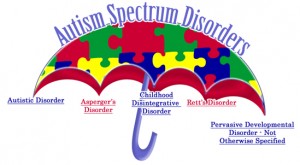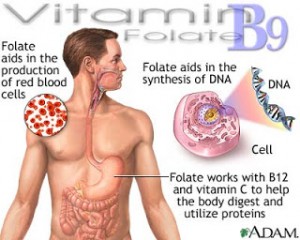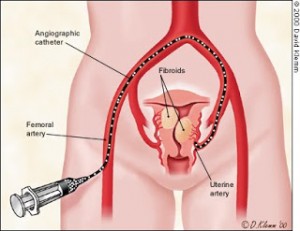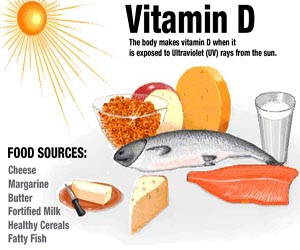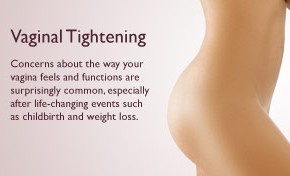Notably, it is worth to mention that April is autism awareness month. Recently autism was in the news as the wife of deceased Bob Denver, who was the actor Gilligan from Gilligan’s Island and founder of The Denver Foundation to help children with disabilities, has written a book where their son Colin’s problem with autism is described. Indeed, autism is a relatively new disease entity. Another key point, we are now talking about the autism spectrum disorder.
What autism is
Autism is a certain behavior/symptom constellation expressed with different degrees of severity in children diagnosed with autism. It is important to realize that autism is much more common in males than in females. In the following I will discuss risk factors for autism, then review why it is so important to diagnose autism right away so that treatment for it can be started earlier than in the past. It is good that April is autism awareness month, as more people will watch out for this diagnosis.
Risk Factors For Autism
Autism has been found to be due to a combination of factors.
1. Compared to a few decades ago women are often older than 30 and men frequently older than 40 when they decide to have children. But studies have shown that when a man fathers a child at the age 40 or older the risk of the offspring to develop autism is higher than when the father is younger than 30.
2. A woman above 30 is already getting into the older age category from the viewpoint of reproduction. Her natural progesterone production from her ovaries is declining. Progesterone production is paramount for keeping a pregnancy alive in the first 10 to 12 weeks. Also, the placenta of a pregnant woman above the age of 30 is not producing as much progesterone as a woman in her early or mid 20’s. However, a high progesterone production of the placenta is necessary to prevent premature labor.
Premature, underweight children
The consequence of this can be that older women give birth to premature, underweight children (Ref. 1 and 2) who are at a higher risk to have neurological problems including autism. Children with a low birth weight have 5-times higher autism rates when compared to children with a normal birth weight. When a woman has gestational diabetes there can be overgrowth of the fetus and like for prematurely born, underweight children there is a definite risk for a baby born much later than the expected date to develop autism.
Genetic and epigenetic factors triggering autism
3. There are genetic and epigenetic factors that can trigger autism. Shank mutations are responsible for idiopathic autism spectrum disorders (ASD) both in humans and in mice. This confirms an earlier study from 2006 in France where Shank 3 gene mutations were found in human autism cases. Recently research from Stanford University identified another genetic mutation, namely neuroligin-3 amino acid substitution and a neuroligin-3 deletion, which can be responsible for autism in mice.
Epigenetic switches
Epigenetic switches play an important role in the placenta. Research from the University of British Columbia showed this as the key for understanding autism. Another publication also stresses the importance of epigenetic switches. Stress during pregnancy can lead to changes in placental biochemical pathways, which causes prenatal epigenetic programming in the direction of autism. However, it appears that the various research findings are converging to only a few key biological processes. April is autism awareness month; so every April these facts reach the public at large.
4. A lack of serotonin from the placenta may lead to autism in the fetus as this publication shows.
5. Certain toxins such as PCB can disrupt the development of normal neuronal pathways in autism. Even a frequently used anti-epileptic drug, valproate (Depacon), has recently been identified as causing a 5-fold increase in autism during pregnancy.
Low vitamin D levels in pregnancy causes autism
6. In April 2009 a study from the Karolinska Institute investigated a Somalia refugee subpopulation that were found to have high autism rates in Sweden and in the US, due to very low vitamin D levels during the pregnancy. One theory was that one cause for autism was vitamin D deficiency in the mother’s womb. A lack of Vitamin D may be the epigenetic trigger to change metabolic processes. This could cause the subtle metabolic changes that occur in autistic children.
7. In 2007 this study showed that the typical delay of the diagnosis for autism in the US was about 18 months and that the average rate at this point was 1 in 150 live births.
Accelerated brain growth followed by slow brain development
8. Apart from these factors there are other observations that are closely related to the diagnosis of autism. Children with autism show remarkable brain growth during the first year of life. However, subsequently they have a period of slowed brain development (Ref.4). There seems to be an inflammatory process associated with the neuropathological changes in the brain. This results in disconnections and a lack of communicative connections between various parts of the brain. This leads to a lack of higher brain functions like speech and social skills. MRI scans have shown specific changes in some severe cases of autism, but this is not uniform enough between cases to use as a diagnostic tool.
Biomedical approach
The author of Ref. 5 uses a “biomedical approach”, which assumes that autism is a syndrome that is genetically based, but triggered by certain factors as listed above (point 1 to 6 and possibly more) during the time of the pregnancy, in the neonatal period and in early infancy. This leads to the changes in the gut (leaky gut syndrome), in the central nervous system, to food allergies, autoimmune reactions and metabolic changes. According to Ref. 4 biomedical practitioners have remarkable treatment successes by identifying where the problems are and treating each one of them.
Autism spectrum disorder – Diagnose Autism Now
DAN (“diagnose autism now”) physicians who take a special interest in children with autism have shown that an early diagnosis of autism and early intervention with a well-orchestrated treatment protocol can lead to good outcomes, where the child is often losing the diagnosis of autism and developing normally. DAN physicians are changing into the Medical Academy of Pediatric Special Needs (MAPS), but the goal of helping autistic children early is the same. I have described the multi-step treatment protocol under Ref. 2 in the Net Health Book.
Hyperbaric oxygen (HBOT) and detoxification
Briefly, the physician orders a multitude tests initially to establish the diagnosis and the severity of the autism spectrum disorder. This gives the doctor the basis for a personalized treatment approach. A combination of hyperbaric oxygen (HBOT) and detoxification with intravenous chelation treatments removes toxins and heavy metals from the body. Stool samples determine whether Clostridium difficile or Candida albicans is present, which are appropriately treated. Dysbiosis, a term to describe an abnormal gut bacteria mix, is common. The doctor rectified this with probiotics. If leaky gut syndrome is present (in 43% to 76% it was shown to be present in three different well controlled studies, Ref. 4), this may also point to food allergies and autoimmune problems. The physician addresses these as well. Along the line of abnormal gut bacteria in autistic children, new research is considering the development of a vaccine to help normalize gut bacteria.
A metabolic weakness is at the center of autism
There appear to be a number of metabolic weaknesses that have to be diagnosed, as there are wide variations among children with autism spectrum disorder. Ref. 4 points out that methylation defects in the metabolism are common and the blood is lacking antioxidant enzyme systems. As a result, there are weaknesses in the immune system and detoxification of heavy metals (such as mercury) is often slow. There have been many studies, which were reviewed in Ref. 4. It was shown that multiple vaccinations have not been the main culprit to lead to autism. It is the metabolic weaknesses of an autistic fetus and/or child that led to slow detoxification. This reaches a point where exposure to polluted air and seafood, even consumption of seafood of the pregnant mother in the womb, could cause high levels of mercury in the infant (due to methylation, sulfation, and antioxidant deficiencies).
Inflammation from a lack of omega-3 fatty acids
Another observation that is important is that children with autism spectrum disorder have 23% lower levels of omega-3 fatty acids in their blood than controls and 20% lower levels of polyunsaturated fatty acids (Ref.4). Omega-3 fatty acid supplementation is therefore important. As omega-3 fatty acids have anti-inflammatory effects, it also helps to combat the inflammation mentioned above. Ref. 4 also points out that autistic children are often put on a gluten-free, casein-free (GFCF) diet as autistic children are more vulnerable to food sensitivities, particularly gluten and casein. This is a practice to prevent or improve a leaky gut syndrome. However, Ref. 4 points out also that testing methods (RAST test, IgE and IgG tests) for gluten and casein sensitivities are unreliable and not reproducible.
Food elimination to identify food allergies
To find out what foods children with autism spectrum disorder will tolerate the physician uses a painstaking food elimination program. Whatever food component he/she suspects to cause worsening of autism is no longer part of the menu for a period of time. Several months later the physician reintroduces it as a challenge test to see whether it is still causing problems. The child needs balanced nutrition, which can be very tricky with autistic children. They often are picky eaters.
The key is to pay attention to all of these pieces of the puzzle. The treating physician must use remedies to address the issues at hand regarding a particular autism patient. This can be quite costly. But autism patients who received early intervention at the age of 2 or 3 became normal children. Early intervention with autism leads to more gifted children than the average child is in their age group.
Conclusion
Whether or not autism or the autism spectrum disorder exists is no longer the question. The question is how early the treating physician can diagnose it. Under point 7 above researchers found that the diagnosis of autism often occurs 18 months too late! With an early diagnosis and early intervention autistic children can grow up to be productive members of society. Often, they have no residual features of autism. If the physician misses the diagnosis of autism early on, it develops into a lifelong disability requiring constant care and supervision.
Epigenetic changes
I mentioned that epigenetic changes possibly from pollution and other factors can be responsible for autism. This may switch genetic switches into the wrong direction towards autism, autoimmunity, leaky gut syndrome and brain dysfunction. Children are much more sensitive than adults. This explains the explosion of cases of autism in the last few decades. Old age at the other end of the life cycle shows effects on the central nervous system. There is an enormous increase of dementia and Alzheimer’s disease in the last few decades. Could there be similarities? Future research will tell.
References
Use of progesterone reduces chance of miscarriage: next 2 references (Ref. 1 and 2):
2. Autism chapter in Dr. Schilling’s Nethealthbook.com: http://www.nethealthbook.com/articles/autism.php
3. More on DAN physicians: http://autism.about.com/od/alternativetreatmens/f/dandoc.htm
4. Rakel: Integrative Medicine, 3rd ed.Copyright © 2012 Saunders, An Imprint of Elsevier; Chapter 7 – Autism Spectrum Disorder: Sanford C. Newmark, MD
